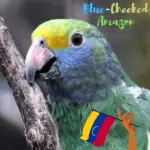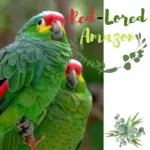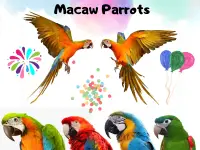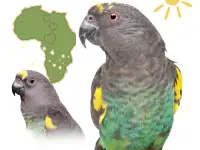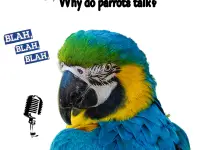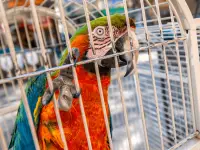
The Diadem Amazon (Amazona diadema), also known as the Diademed amazon, is a species of bird in the Psittacidae family Amazon Parrot.
| Reign | Animal |
|---|---|
| Fork | Chordata |
| Sub-embr. | Vertebrate |
| Class | Poultry |
| Order | Psittaciformes |
| Family | Psittacidae |
| Gender | Amazon |
Description
Diademed amazon This bird is 32-34 cm in length. Like most Amazons, it has essentially green plumage. The forehead and lores are red. The cap is bluish. A yellow spot, sometimes absent, marks the base of the dark beak. A red mirror is present on the secondary remiges.
length and 450-550 grams.
The Tiara Amazon (Amazona Diadema) It is usually green, with black edges with crown feathers, up to the coat and chest; neck with green crown; the back of the neck green, purple margin; feathers of the cere and the front, Red; yellow-green., less yellow, upper cheeks, up to the headphone ears; secondary red on the bases, the rest green; green tail; pale yellow eye-ring; orange eyes; dark gray peak.
Previously considered congener with the Red-eared Amazon (Amazona autumnalis), It is very similar to the subspecies Amazona autumnalis Salvini
Distribution
This bird is endemic to the state of Amazonas, Brazil.
Endemic low Black River and the northern margin of the amazon river, in the states of Amazona and northwest of Pour, Brazil.
Behavior
This noisy species (rather metallic calls) is gregarious.
Habitat
It is likely that a variety of lowland forest species habitats, including evergreen forest edges, as well as modified areas containing scattered trees or plantations are frequent (Del Hoyo et al. 1997, fosse et à la. 2016).
They are in loose groups or pairs and are gregarious when food.
Reproduction
The setting is 2-3 eggs. Mating season is supposed to be at the beginning: January-March.
Food
It feeds mainly on yes seeds, even cultivated species (Del Hoyo et al., 1997), although there are no published data (Del Hoyo et al., 2016).
Conservation Amazon diadema
• Current IUCN Red List category: Endangered.
• Demographic trend: Degressive.
Justification for the Red List category Based on a model for future deforestation in the
Amazon basin and susceptibility to this new species captured, it is suspected that its population will undergo a very rapid over three generations of descent in 2002, so it is in danger of extinction Rationale for the trend It is expected that this species will lose between 49 and a 55% of suitable habitat in its distribution in three generations (37 years) from 2002, based on a model of deforestation of the Amazon (Soares-Filho and at the ). Given its susceptibility to capture, it is suspected that species will decline by 50-79% during this time.
A diademed amazon (Amazona diadema) at Loro Parque Fundacion
SOURCE:Video Ark
Related Articles:

